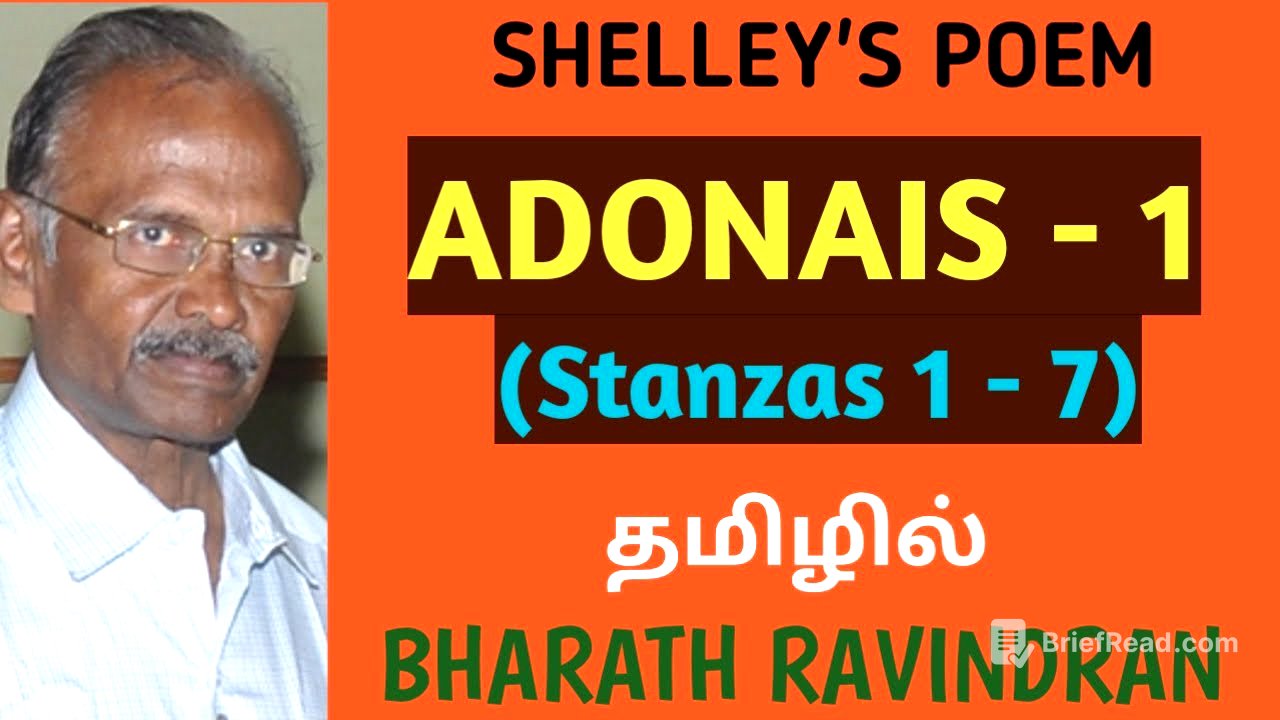TLDR;
This video discusses Shelley's elegy "Adonais" dedicated to John Keats. The poem employs Spenserian stanzas and explores themes of loss, mourning, and the enduring power of art. It references classical figures like Aphrodite and Urania, and alludes to other poets like Milton, Homer, and Dante. The elegy reflects on Keats's death, the lack of appreciation for genuine poetry, and the hope for his lasting legacy.
- Shelley's "Adonais" is an elegy for John Keats, written in Spenserian stanzas.
- The poem explores themes of loss, mourning, and the immortality of art.
- It references classical figures and alludes to other great poets.
Introduction to "Adonais" [0:02]
The video introduces Shelley's elegy "Adonais," noting its use of Spenserian stanzas, which consist of nine lines each. The poem is a lament for the death of John Keats.
First Stanza: Mourning the Death of Keats [7:56]
The first stanza focuses on mourning Keats's death. It references the death of John Keats and emphasizes the sorrow and loss felt due to his passing. The stanza uses strong emotional language to convey the depth of grief.
Second Stanza: Invoking Urania [27:22]
The second stanza invokes Urania, the muse of astronomy and divine knowledge, and Aphrodite. It questions where Urania was when Keats was struck down, suggesting a sense of abandonment by the divine. The speaker references the shaft or arrow that pierced Keats, symbolizing the cause of his death.
Third Stanza: Reflecting on Milton and Poetic Greatness [56:33]
The third stanza reflects on Milton, comparing Keats to the great poet. It suggests that not everyone can reach the same level of poetic greatness as Milton, Homer, or Dante. The stanza explores the idea that some are not fit for such heights, and it touches on themes of ambition and the fleeting nature of earthly achievements.
Fourth Stanza: Lamenting the Loss of a Young Poet [1:12:11]
The fourth stanza laments the loss of the youngest and dearest poet, Keats. It reflects on the age in which genuine poetry is not appreciated and suggests that Keats was a genuine poet who was not recognized in his time. The stanza touches on themes of unfulfilled potential and the tragedy of a life cut short.
Fifth Stanza: The Grave Among the Eternal [1:21:56]
The final stanzas discuss Keats's grave among the eternal.









